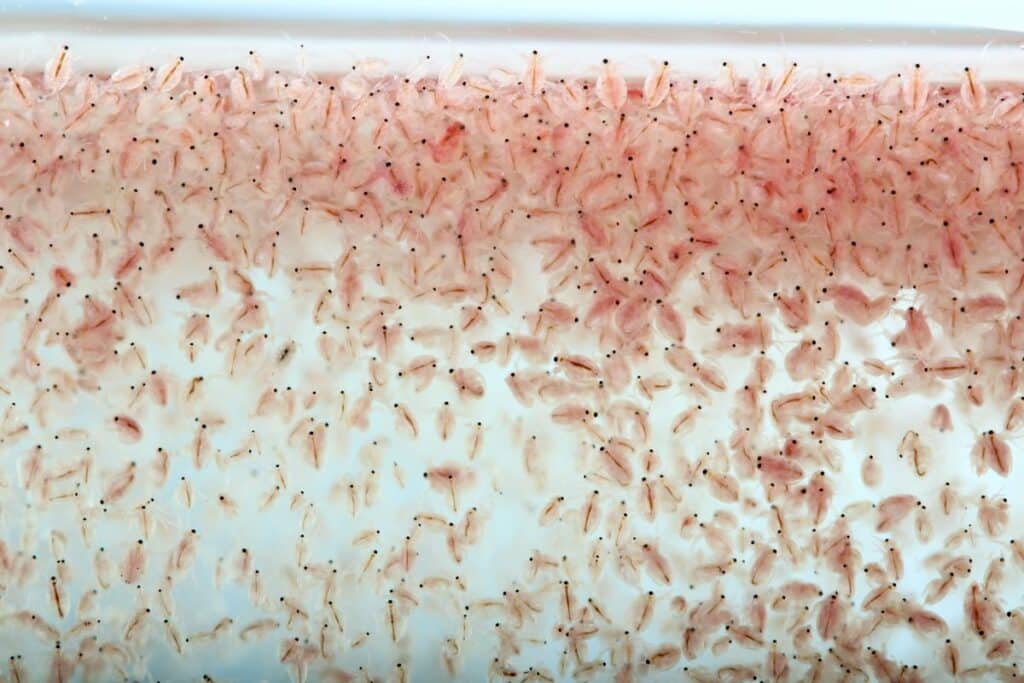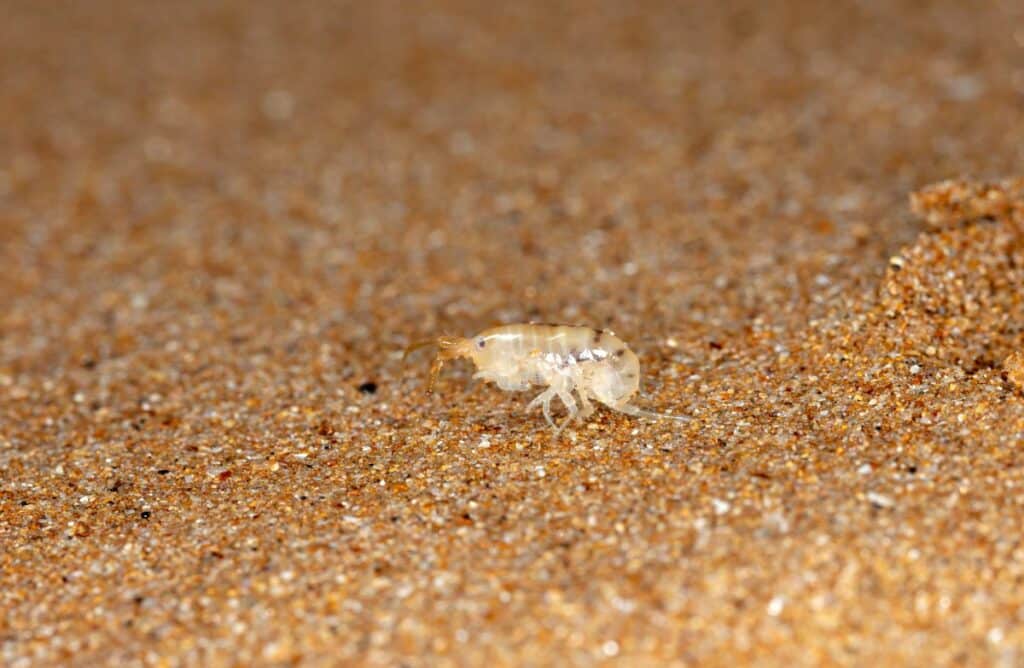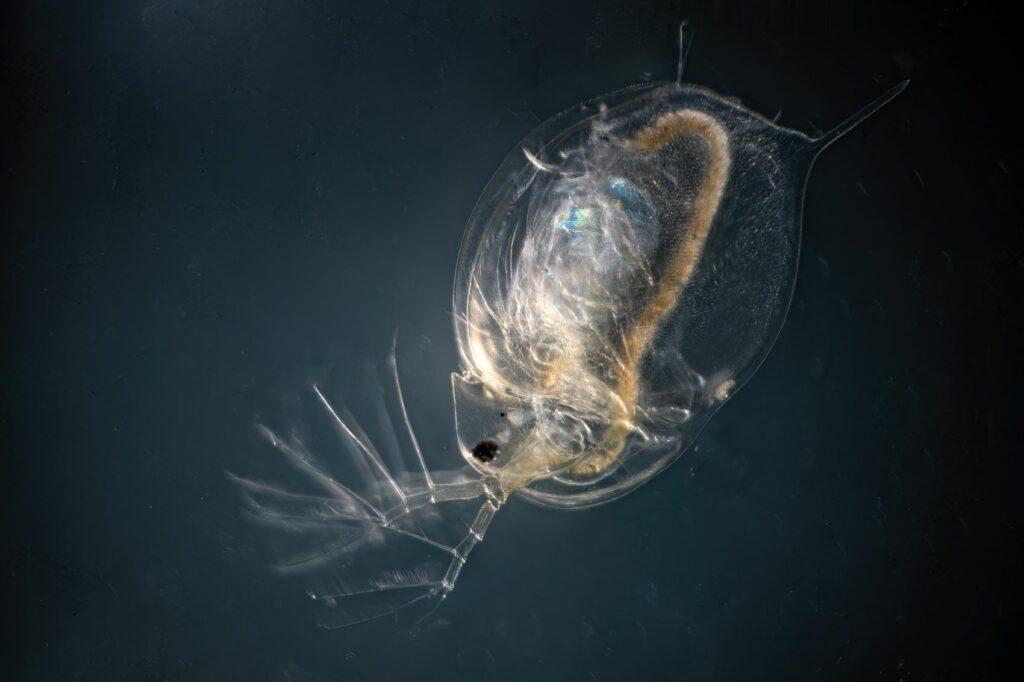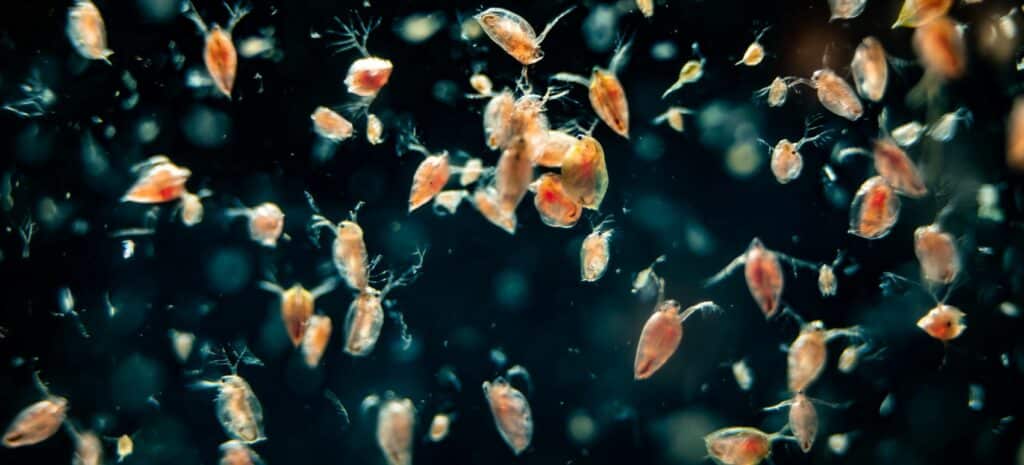the essentials in brief
You can find water fleas in pet shops, aquarium shops or specialized online shops buy.
You can easily see larger water flea species if you take a closer look. You can read more about her looks here.
If you have too many floating algae in your pond, it makes sense to put water fleas in it. Read more about their role in the ecosystem here.
Water fleas are among those unassuming heroes our waters. As algae eater they play a crucial role in maintaining water quality and the diversity of aquatic life. Dive into the exciting world of water fleas with us and discover how they do it ecological balance in ponds, lakes and rivers. We'll show you how they live.
What are water fleas anyway?

Water fleas are small crustaceans belonging to the Cladocera zoological class. They are also under the scientific name daphnia known and are found in various bodies of water such as ponds, lakes and slow-flowing rivers.
The tiny creatures got their name because of their ability to move freely in the water and at the same time flea-like jumps close. Despite being so small, they play an important role in the ecosystem of the water bodies in which they are found.
This is how you recognize them in your pond
Although small, water fleas are easily visible. you have one Size of about 0,2 to 5 millimeters, depending on the species. With their distinctive prone swimming style with long antennae, water fleas are relatively easy to spot.
The transparency of her body even allows you to see their internal organs, such as the heart. In addition, their eyes are clearly visible as dark dots. The fact that water fleas can be seen with the naked eye makes them a fascinating object to observe in nature.
Of course, detecting water fleas is easier if the body of water has a good water quality and is not too heavily soiled. Clean bodies of water are often home to a wide variety of aquatic life, including water fleas.
This is how water fleas live
Water fleas are widespread worldwide and can be found in almost any standing or slow-flowing body of water. They prefer clean waters with good nutrient content, as they are separated from small particles, algae and bacteria feed.
Most species prefer temperatures between 15 and 25 degrees Celsius, but some species can also settle in colder or warmer waters.
You are filigree swimmers and can both horizontally and vertically move in the water. Their antennae play a crucial role in orienting and perceiving their surroundings. Water fleas are sensitive to changes in water quality and retreat to deeper water layers when conditions deteriorate.
Additional information: In good environmental conditions, water fleas can multiply rapidly. They place special egg-shaped structures, so-called ephippia, in their shell, which enable a kind of "dormant". These eggs can survive through bad times and allow the water fleas to breed again under the right conditions.
water fleas in the ecosystem

Water fleas play a crucial role in a pond's ecosystem. As filter feeders, they feed on algae and other small particles in the water, helping to keep the water clear and healthy regulate nutrient levels.
Through this filter function, they help to control the growth of algae and the production of oxygen promote what is vital for the entire ecosystem.
Water fleas are relatively low in the food chain and are one valuable source of energy for higher trophic levels. Indirectly, they therefore contribute to the preservation of biodiversity and stability of the pond ecosystem.
key fact box
Water fleas are not actually parasites.
The tiny creatures do not actively attack other organisms for food or harm. On the contrary, they play a rather symbiotic role in the ecosystem, by helping to regulate algal populations and serving as food for other animals.
However, there is an important distinction to make: while most water fleas feed on algae and plant matter, there are some species that also act as predatory water fleas are known. These species feed on other water fleas and smaller aquatic creatures.
Although they are predatory, they are still important players in the pond ecosystem as they balance between different species maintained by water fleas and help prevent overpopulation.
In summary, water fleas can be extremely useful organisms be viewed in a pond. Their ability to filter the water and control excess algae promotes the health of the entire ecosystem.
As a source of food for other animals in the pond, they contribute to maintaining biodiversity and are therefore at the forefront Basis of a complex food chain.
Good to know: Unlike true fleas, water fleas are not dangerous to humans.
Water fleas for algae control

Water fleas are extremely useful as algae eaters and play an important role in the ecosystem of a body of water. Their ability to eat algae has several positive impact:
- algae control: A moderate growth of algae is good for the pond ecosystem. However, excessive algal blooms can cause them to cover the water surface and impede gas exchange. Water fleas can control algae growth through their feeding activity and thereby promote oxygen production.
- nutrient regulation: Algae need nutrients such as nitrogen and phosphorus for their growth. When an excessive algal bloom occurs, it can be a sign of high levels of nutrients in the water body, which may come from fertilizers or other sources. Water fleas help absorb these nutrients through their diet and help keep nutrient levels balanced.
- promoting biodiversity: Water fleas are an important food source for other aquatic life such as fish and other predators. By playing an important role in the food chain, they promote the biodiversity of the water body. When water fleas control the algae through their feeding activity, sufficient food resources are preserved for other animals.
- health of the entire ecosystem: A balanced ecosystem is critical to the health of the entire body of water. Water fleas as algae eaters help maintain balance in the aquatic community. They affect not only the algal population but also other organisms in the food chain.
Tip: Of course, you can also buy water fleas, for example in pet shops, aquarium shops or specialized online shops.
Overall, water fleas are extremely useful as algae eaters, as their diet contributes to the water quality to improve, control the growth of algae and the Biodiversity to promote.
Tiny crustaceans as algae regulators
Water fleas, the small and fascinating crustaceans, are of immense importance to the balance and health of water bodies. Their role as algae eaters makes them valuable helpers in the Maintaining clear and clean water quality. By controlling algae, they promote the production of oxygen and support a diverse aquatic community.


